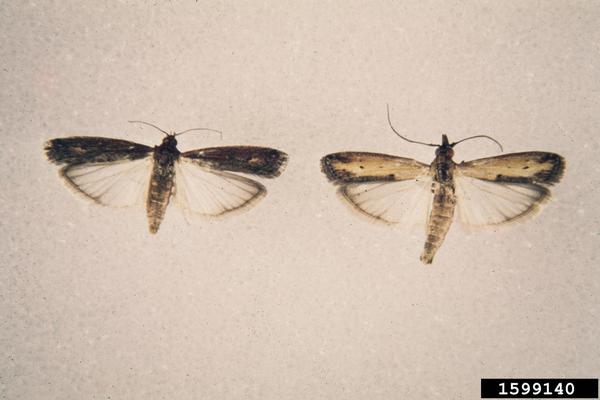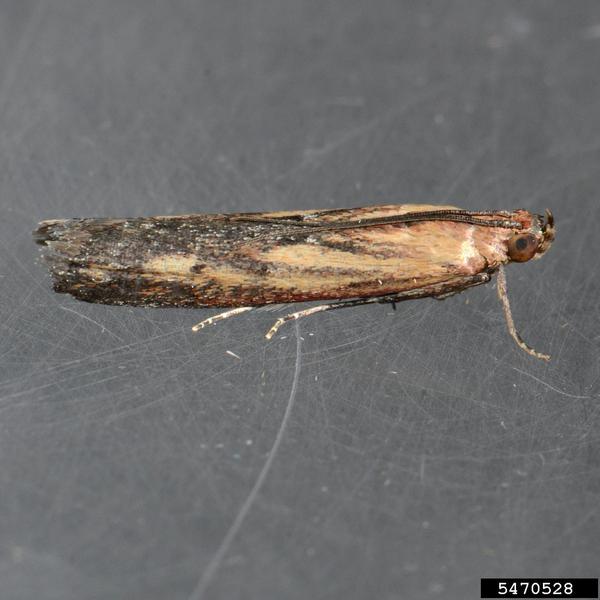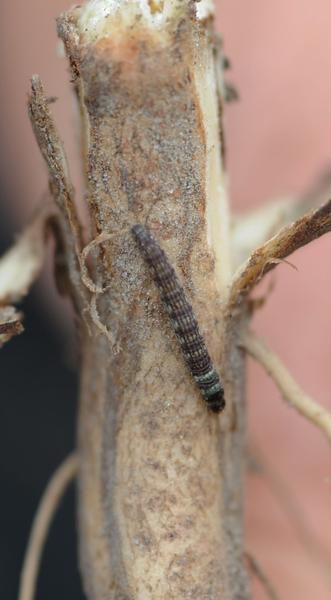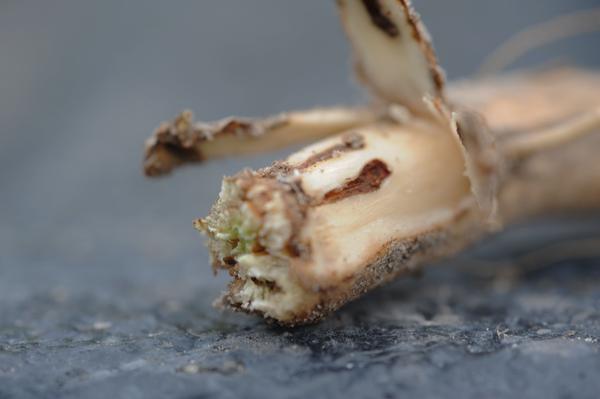Lesser cornstalk borer
Elasmopalpus lignosellus (Zeller). Family: Pyralidae. Order: Lepidoptera.
Biology and identification
Adults are brownish with narrow forewings that are gray at the tips. The larvae are small caterpillars, with brown and white stripes and a blueish tinge. Larvae move in silken tubes near the surface of the soil and can move forward and backward very rapidly. Adult female moths lay eggs in soybeans and prefer dry soils over moist soils. Also, larvae are often found on double-cropped beans after burning, presumably because the soil is dryer as a result of the loss of ground cover and due to the increase in water-repellency of the soil (an unfortunate consequence from burning). In addition, the adult moths can sense smoke using their antennae. Presumably this could allow them to find freshly burned areas to lay their eggs. Dry soils also favor egg and larval survival.
Injury and damage
Lesser cornstalk borer larvae feed at the base of the plant, just below the soil surface. In doing so, they can girdle the main stem and lead to plant death or lodging. Lodging from this pest is usually irregular and occurs just at the soil surface. Feeding galleries are sometimes visible on the stem when bark is peeled back near the soil surface.
Economic threshold
There is no known economic threshold for this insect, since remedial management is difficult.
Management
Avoid planting soybean into burned stubble, planting late into droughty soils, or planting into fields that have been burned down with a herbicide less than two weeks prior. Lesser cornstalk borer larvae are highly adapted to dry conditions, with adaptations to help them retain water. As a result, some researchers suspect that these larvae can tolerate dry conditions while their predators cannot. For example, when fields are cooler and wetter, predators of lesser cornstalk borer, such as earwigs, are favored. Other insect predators such as big-eyed bugs, carabid beetles, robber flies and earwigs can also eat larvae.
Larvae and pupae can be killed by disease (viruses and the fungal organism Aspergillus flavus Link.) and parasites in addition to predators. Disease-causing organisms are nearly everywhere in the environment and their development is favored by moisture. Additionally, in order for this fungus to kill lesser corn stalk borer larvae, the larvae must be stressed.
Publication date: April 8, 2020
N.C. Cooperative Extension prohibits discrimination and harassment regardless of age, color, disability, family and marital status, gender identity, national origin, political beliefs, race, religion, sex (including pregnancy), sexual orientation and veteran status.




